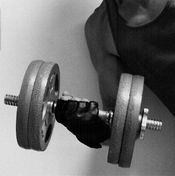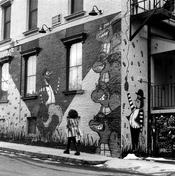With the weather here having been either wet, real cloudy and gray, or too cold, I have spent the past few days completing my curve family using BT2B developer........and it wouldn't have mattered if the weather was great, I would've completed it anyway, I think it's valuable time and film spent. I will say that when I started this endeavor of mixing my own developer and starting with BT2B, I did not anticipate using it to develop TMX relative to "N+" development. I figured I'd be using XTOL for those and relying on BT2B for when needing that compensating effect. But in my searching and reading I found that it was certainly a warranted and doable thing. I had some confusion at first on the term "divided" versus "two bath" (AA called it "two solution"). A true "divided" developer, if I understand it correctly, would not have much or very little development occurring in bath A. But I've just opened myself up and may still be displaying some confusion on the process, idk.
So here is my BT2B curve family. I don't know if I needed to actually develop bath B for as long as bath A when I got to the longer development in the 7.5 min and 9 min range, so I did so just to be consistent. I "think" someone mentioned early on that extended time in bath B was not harmful to the outcome. Adjusting the 4.5 min curve to the left with its whopping 1 2/3 stop loss of speed does not allow the curve to reach the N-2 mark but it is on that trajectory. What I like about that curve is that when I compare it to my N-2 curve with TMX and XTOL 1+0, the BT2B curve exceeds the densities obtained on the XTOL curve from Zone I 1/2 to Zone IV 1/2, not by much but it does exceed it, indicating beneficial development in those low value areas. As to the 9 min curve, it clearly allows me to interpolate the development time downward to try and hit that target better but I'd do that pictorially, not with another test sheet.
As can be seen by the EI's for each curve, all had to be shifted back to the left on the log exposure scale by 1 2/3 to 1 1/3 stop to reflect a Zone I density of 0.1...........just the basic fixed speed point method of determining speed with the ZS. As you can see the target for "N" development times is a Zone VIII density of 1.2 +- 0.05 (indicated by the red dashes above and below each target) to try and develop the negative to a relatively consistent NDR of 1.1 from Zone I to VIII. I found it interesting that the 5.5 min curve reflects EI40 and the 6 min curve reflects EI32, I would've thought it would show the reverse.
And I say with all due respect, there is no need for opinions on flaws associated with how speed is determined using the ZS, it's not my intent to spark a discussion in this thread on what some think is a better way, thank you. I'm just reporting that's how I've done it here and how I've always done it. I can't find any reasons to argue with my results so far.
I look forward to giving these curves their pictorial chances going forward. I'm certainly open to constructive criticism on how better to utilize BT2B as it pertains to these curves or perhaps possible better development time and agitation scenarios with A and B, which I'd be glad to implement at some point in the future. I'm also, intrigued with that idea of having two other bath B mixtures available, one with 7g of sodium metaborate and one with 20g of sodium metaborate for use in dealing with different SBR's using BT2B.
View attachment 388441








 . If you get the exposure right, printing really becomes a matter of finding the right grade. That's what makes split-grade printing so interesting with BTTB. Because you don't have to fight with you negative, it opens it to various interpretations.
. If you get the exposure right, printing really becomes a matter of finding the right grade. That's what makes split-grade printing so interesting with BTTB. Because you don't have to fight with you negative, it opens it to various interpretations.




